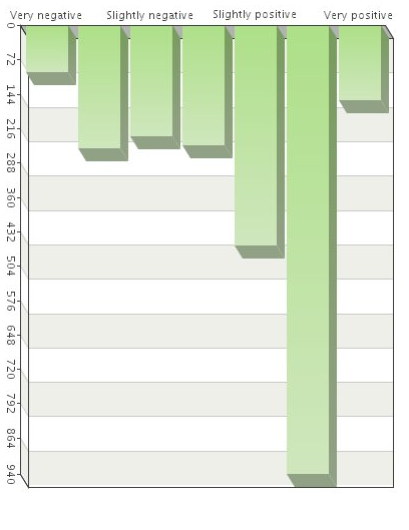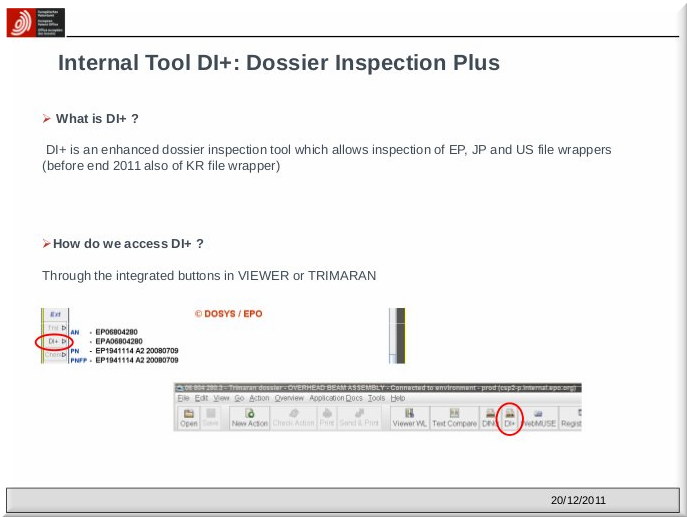

The EPO's examination division inspects prior art/dossiers. But does that do the job or just wrongly reinforces that idea (assuming consistency in terminology)?

Source: Presentation from Steffen Wolf [PDF]
THE EPO does not formally permit software patents. The USPTO still grants some, but like the EPO it requires that people disguise the 'invention' being software. This can be accomplished in all sorts of ways; first of all, they don't use the word "software" and instead use words like "invention" along with mumbo-jumbo like "technical effect". That in its own right can help mislead examiners who work in a rush with unrealistic quotas/demands.
"What happens when notorious buzzwords (which typically lack any concrete meaning) are introduced?"The images above, extracted from a staff survey (responses in English and German [PDF] and an old presentation from Steffen Wolf of the EPO), remind us of how EPO workers assess (or assessed) prior art etc. Some of them used to complain that semi-automated (or human-aided algorithms) would fail to identify prior art because of homonyms and synonyms. It requires an actual domain expert to assess.
What happens when notorious buzzwords (which typically lack any concrete meaning) are introduced? That seems to be happening a lot these days. Case of point? This new IAM interview which is promotion of an upcoming IAM event (for the patent microcosm). Like the EPO, these people use words like "Internet of Things/Industry 4.0 realm" (whatever that practically means; that typically alludes to old-fashioned devices with an on-board Internet/networking stack). That's exactly how EPO management promotes software patents without uttering the term "software patents". IAM added: "IP chief at ThyssenKrupp Stephan Wolke spoke to IAM about the importance of IP strategy and how the IP landscape is likely to develop over the coming years. Discover more here ahead of his session at IPBC Europe..."
"No concern for actual quality anymore; it's all about numbers (e.g. of patents and lawsuits)."So they'll just carry on promoting software patents; they'll just abstain from the term itself. These terms are mostly helpful for legal (or litigious) reasons; these new terms also complicate prior art search. What we're left with is more litigation. See the USPTO Patent Examination Research Dataset and the USPTO Patent Prosecution Research Data. No concern for actual quality anymore; it's all about numbers (e.g. of patents and lawsuits). This is not what patents came to exist for.
Things have gotten so bad that Microsoft lobbying has just made it into IP Watch. Incredible. It's a form of lobbying for software patents (under the guise of "AI"), just like at Watchtroll 3 days ago. Jones Day's Andrea Weiss Jeffries, Emily J. Tait and Jason M. Garr also wrote about "Protecting Artificial Intelligence IP". Never mind if "Artificial Intelligence" is a branch of algorithms, i.e. software patents in this context.
"Like we said a decade ago, one way to put an end to patent trolling is to target the weapon they most typically use: software patents"This is worrying as nearly nobody in the mainstream/corporate media even bothers pointing that out. The media is still dominated by patent law firm (as far as articles about patents are concerned). They even repost their articles across several domains to dominate and increase visibility. Their conclusion: "AI today is less about imagined scenarios in the far-distant future and more about real-world applications happening right now or on the horizon. Organizations having a robust and well-thought-out AI protection strategy in place will be best positioned to enforce their IP rights when infringement and misappropriation occur and, better yet, to prevent unlawful conduct before it occurs. Trade secrets and copyright provide unique protection for IP that cannot be achieved by patents alone."
Well, patents on software (e.g. "AI") aren't even valid under Section 101.
We expect to see many more of these buzzwords in the coming months or years; it's a relatively new trend in the patent world. We've just mentioned (in the previous article) how blockchains are used too, along with other novel-sounding terms. How about this new article from the National Law Review? Greedy patent lawyers from the firm Foley & Lardner LLP (salivating over the prospects of lawsuits) describe particular trolls as "Patent Assertion Entities" (PAEs) and speak of LOT:
As a middle ground, most of the automakers have joined the LOT Network, which directs its members to develop license agreements that prevent assertion of the licensed patents by Patent Assertion Entities against any other LOT members. Similarly, a large complement of automakers and suppliers have also joined Unified Patents, which provides a mutual defense by challenging the validity of patents asserted against its members. Whereas a non-practicing entity may traditionally seek small quick settlements from many companies, when the targets all group together in one of these membership organizations, the leverage shifts as all of the companies share the same burden that each use to handle individually. These organizations have shown a strong propensity to align their members and reduce litigation. However, it remains to be seen if the good will developed from sharing in the attacks from non-practicing entities will hold up when a major patent challenge arises between two members of these organizations.